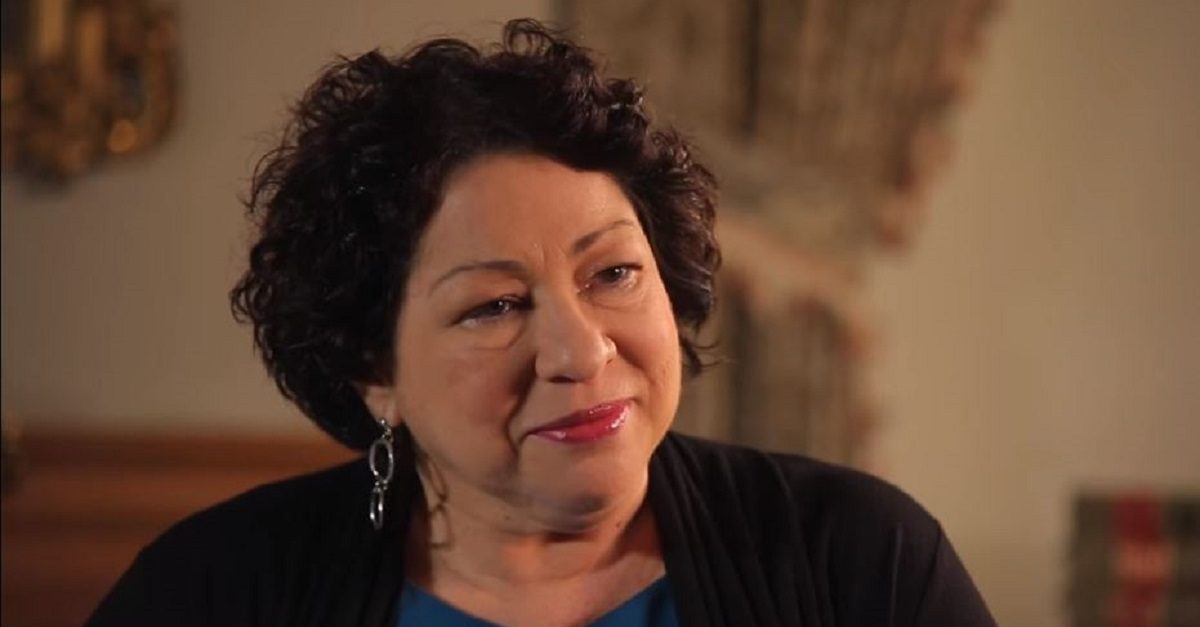
Supreme Court docket Justice Neil Gorsuch tore into Justice Sonia Sotomayor’s essential dissent in his majority opinion in 303 Creative vs Elenis, a non secular freedom case argued prior to the courtroom this earlier time period.
In his opinion, Gorsuch held that “the First Amendment prohibits Colorado from forcing a website designer to create expressive designs speaking messages with which the dressmaker disagrees,” in this case, homosexual marriage.
Dissenting for herself as well as Justices Elena Kagan and Ketanji Brown Jackson, Sotomayor known as the choice “profoundly fallacious,” and argued that its “speedy, symbolic effect,” will be “to mark gays and lesbians for 2nd-category standing.”
Gorsuch wasn’t impressed.
“It’s troublesome to read the dissent and conclude we are having a look at the related case,” he starts prior to arguing that “it reimagines the information of this case from high to bottom.”
“The dissent claims that Colorado wishes to control Ms. Smith’s ‘conduct, now not her
speech. Forget Colorado’s stipulation that Ms. Smith’s actions are ‘expressive,’ and the Tenth Circuit’s conclusion that the State seeks to compel ‘pure speech,’” cited Gorsuch ahead of observing that her declare that the decision “delivers a business” a “right to refuse to serve individuals of a secure category.”
“We do no such factor and Colorado itself has stipulated Ms. Smith will (as CADA requires) ‘work with all individuals despite . . . sexual orientation,’” explained Gorsuch. “It’s the dissent that will have this Court docket do something actually novel by using permitting a govt to coerce a person to talk contrary to her beliefs on a serious problem of personal conviction, all to be able to eliminate ideas that range from its own.”
Later, Gorsuch found that “in some locations, the dissent will get so grew to become around in regards to the details that it opens fireplace by itself place.”
“While stressing that a Colorado firm can’t refuse ‘the whole and equal enjoyment of [its] services’ in response to a consumer’s safe standing, the dissent assures us that a company selling inventive services and products ‘to the public’ does have a proper ‘to come to a decision what messages to incorporate or not to include.’ But if that is genuine, what are we even debating?” he asks.
He additionally challenged Sotomayor’s seize of the relevant case legislation, submitting that “the dissent’s remedy of precedent parallels its coping with of the tips.”
For instance, he offered “its remarkable suggestion that a government forcing an individual to create speech on weighty concerns with which she disagrees—all, as the Tenth Circuit found, with the purpose of ‘[e]liminating’ views it does no longer share, best ‘incidental[ly]’ burdens First Amendment liberties.”
“Some distance from embracing a perception like that, our instances have rejected it time after time—together with in the context of public lodging rules,” he argued.
The combative speak between Gorsuch and Sotomayor in 303 Inventive adopted a in a similar way heated conversation between Justices Clarence Thomas and Jackson in college Students for Fair Admissions v. President and Fellows of Harvard College.
The submit Gorsuch Tears Into Sotomayor’s Dissent In Spiritual Freedom Case: ‘Reimagines The Tips’ And ‘Opens Fireplace On Its Personal Place’ first seemed on Mediaite.



